Discovered in ecosystems the undomesticated creatures of Montenegro are hiding away. Up to date, over 208 species of wild animals have been spotted.
Content
- Montenegro's Big 5
- Montenegro's Little 5
- Montenegro's Aquatic 5
- Montenegro Birds – Medley of 5
- Montenegro Reptiles Worth a Mention
As I originated from South Africa, currently residing in Montenegro, wildlife has been an immense focus in my life growing up. In Montenegro, I find the high mountainous, wild unspoilt terrain, covered in thick, concentrated forests a haven for wildlife of Montenegro wishing to keep their privacy a secret. If venturing up in the mountains, going to one of the national parks or going on implausible hikes that hikers from all over the world come and experience, it is wise to book a safari guide. They do know what and where is safe.
I have written other informative and interesting articles on Montenegro, such as Montenegro – Crna Gora – “Black Mountain” and Recommended Montenegro – Hotels & Accommodation, also Herceg Novi in Montenegro: living like a local
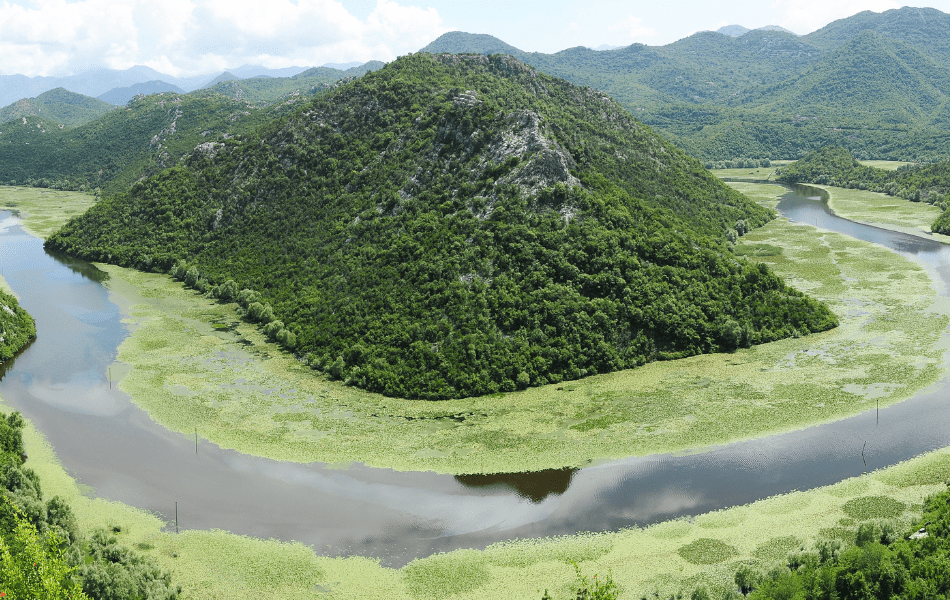
Montenegro’s Big 5
1. The Grey Wolf
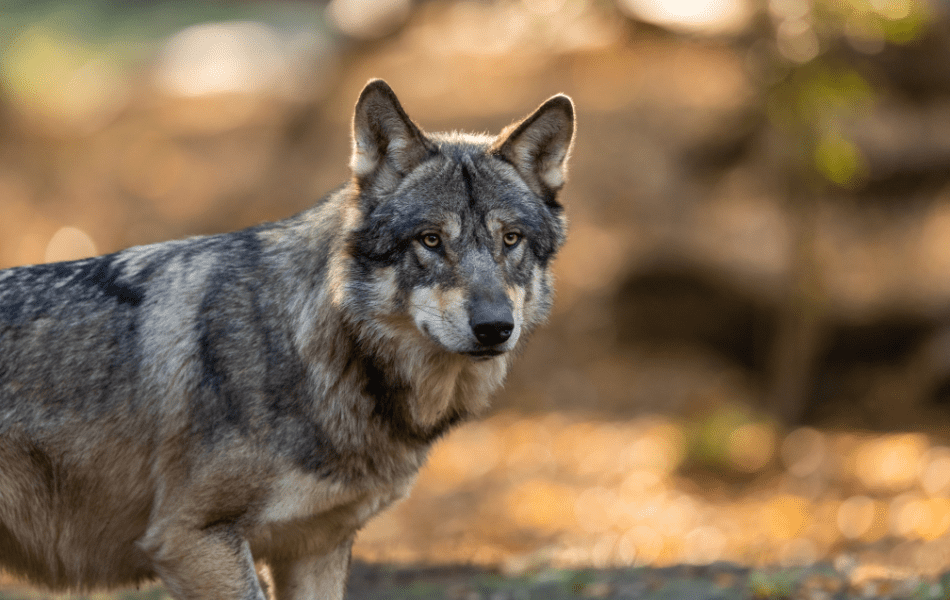
There is no reliable monitoring of how many wolves there are in Montenegro, therefore assumptions are made that there are 200 – 300 that ramble the forests. The wolf is a symbol of fearlessness, whereas it was believed that wolves scare away ghosts and evil spirits and they also protect children from illness because of this parents gave their male children names derived from the word.
- These wolves are the largest wild canine species
- Mating is generally for life
- Communication is through body language, howling (not at the moon), growling, and barking and when being submissive, it will roll over onto its back, whimper, pucker in its tail or lick the other wolf’s mouth
- When they run, they can reach speeds of up to 64 km
- Wolves are not protected in Montenegro and are often hunted from 1 September through to the end of January
2. Wild Boar
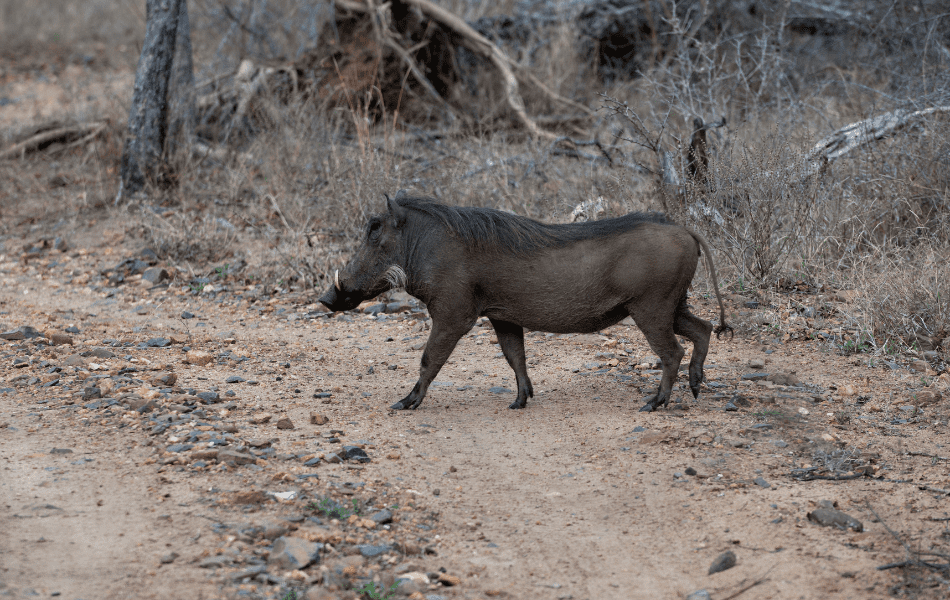
Where we are based in Herceg Novi, high up on the hill, close to the forest, you can actually hear the hunters hunting these wild boars. Hunting the boar is allowed from the beginning of October to near the end of February, forever often referred to as the wild swine or wild pig. Omnivorous and eat a wild range of plant and animal matter emphatically, their best is carrion (the decaying flesh of dead animals). Don’t fool yourself, these boars are vicious!
- Male boars develop a thick layer of tissue to protect themselves from injury during fights only during the breeding season
- Two layers of fur cover their coats. A soft underlayer and a coarse, spikey top layer
- Adult males are solitary and only seek out females during mating season and will stay with the females until the piglets are about a year old. . The females and the young makeup groups called sounders
- While hiking, look out for uprooted and disturbed soil for the presence of the powerful wild boar
3. Eurasian Brown Bear
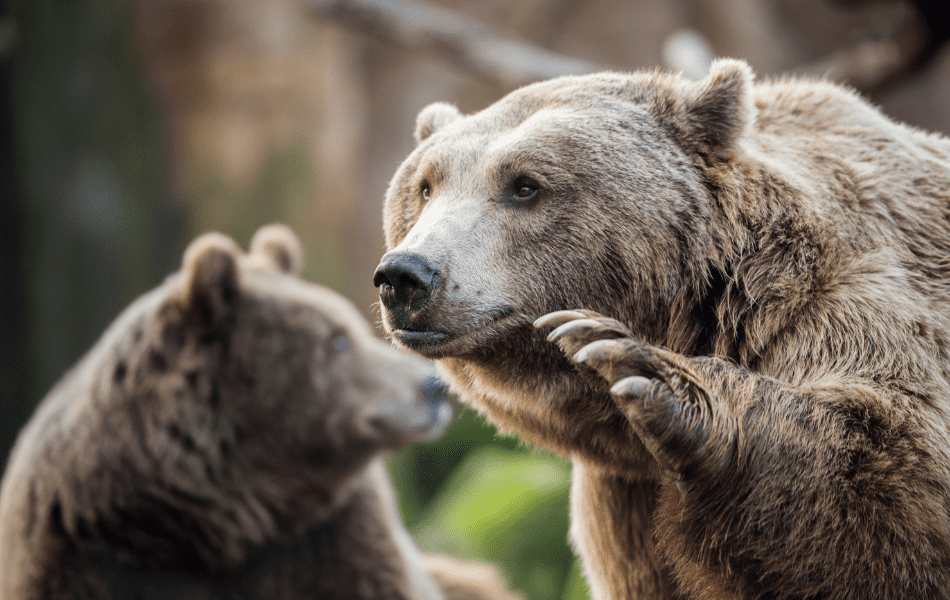
Brown bears are huge and it is adamant that you stay out of their way definitely, as they can weigh between 150 kg to 300 kg. Most of the brown bears of Montenegro are found up north, especially in the Biogradska Gora National Park which is one of the last three large virgin rainforests in Europe. These bears are mainly active at sunset and at night, however, unlike black bears, they cannot climb trees.
- When they protect themselves, the bears stand on their hind legs (can reach 7ft tall) and fluff their fur
- Did you know they live for 20 to 30 years?
- With their exceptionally good nose, bears can smell food several kilometres away
- When the sow (female bear) is hibernating in winter, she has her cubs when she is asleep. she can have up to 5 cubs at a time, but the average is 3
- Brown bears have a high IQ and can run exceedingly fast. Up to 56 km per hour. They are the fastest of the bear species
4. Balkan Chamois
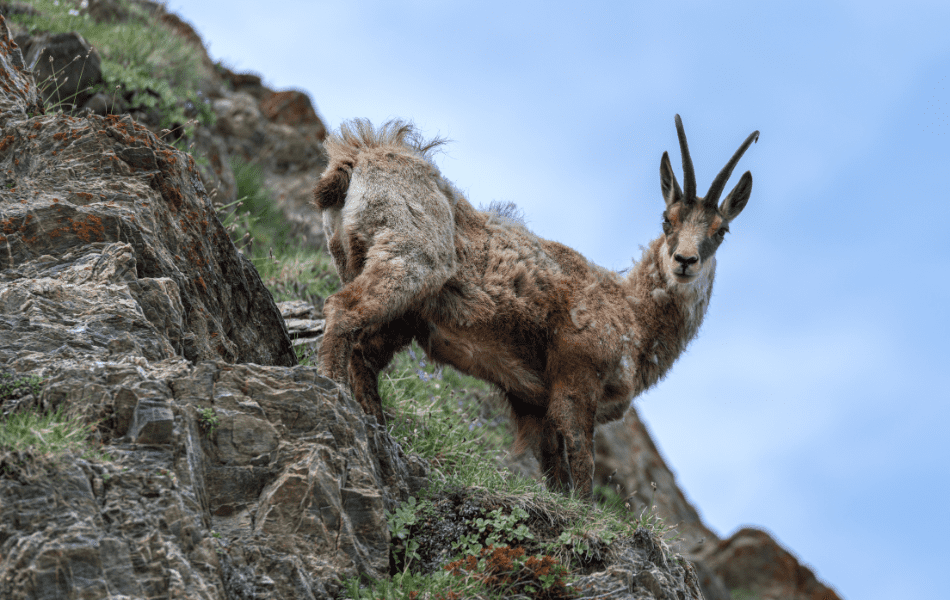
Larger than the Alpine Chamois with larger horns, this mountain goat is native to the Balkan mountain regions and can be found in most mountainous areas of Montenegro. I am sure you have heard of the “chamois” leather that is very popular for buffing and drying cars, which is also known as the “chamois cloth”.
- Their tails are not normally visible, except during the mating season
- If in danger the chamois will stamp its feet and make a rather odd whistling sound and get up high into the rocky mountain away from the predator
- It has elastic pads on the hooves which facilitate movement on the rocky and sometimes slippery terrains
- They are superb jumpers. Jumping up to 6.6 metres high and 6 metres horizontally, all at the same time
- Speed is no problem for them over uneven surfaces and they can run at a speed of 31 km per hour
5. Red Deer
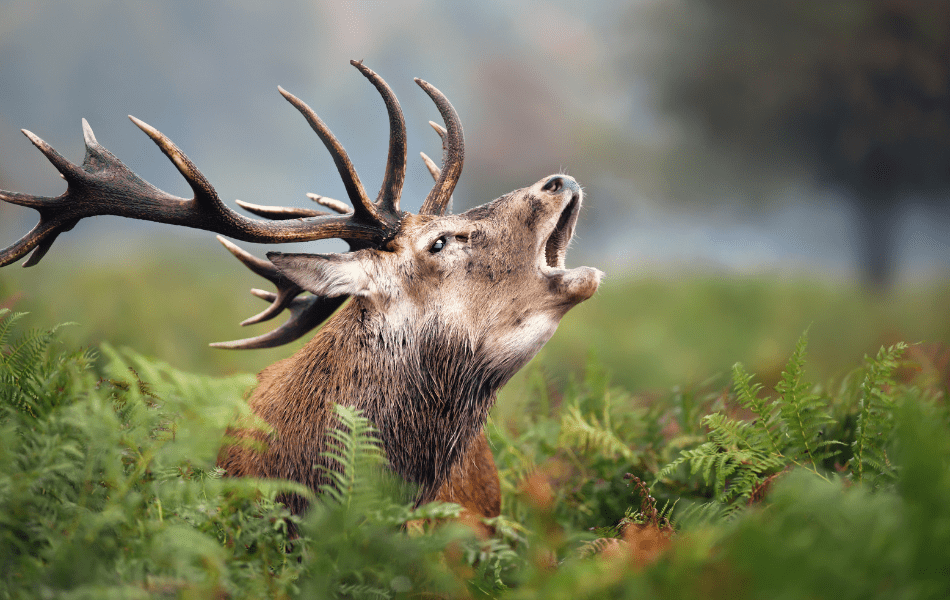
Red deer are the largest species of deer in Europe. They can weigh up to 200 to 240 kg, nevertheless are excellent runners, as they can reach speeds up to 56-64 km/h. Very fast! The male is called a stag or hart and the female a hind. If you hear a loud roaring sound from September to November, during “rut” season (mating season), echoing through the mountains, you know where the sound comes from.
- Antlers will grow larger on the stags as they get older, and when they shed old ones new ones grow, but when they get very old, they get smaller
- When the antlers are growing, often the stag will lose weight and could look rather thin. Antler growing is an energy-intensive process
- A soft skin called “velvet” covers their bodies and nourishes them with blood vessels
- The stag’s front hoof may measure 8-9 cm in length
- During the summer their coats are a rusty reddish colour but during winter, their colouring changes to a darker brownish tinge
Montenegro’s Little 5
1. Slow Worms
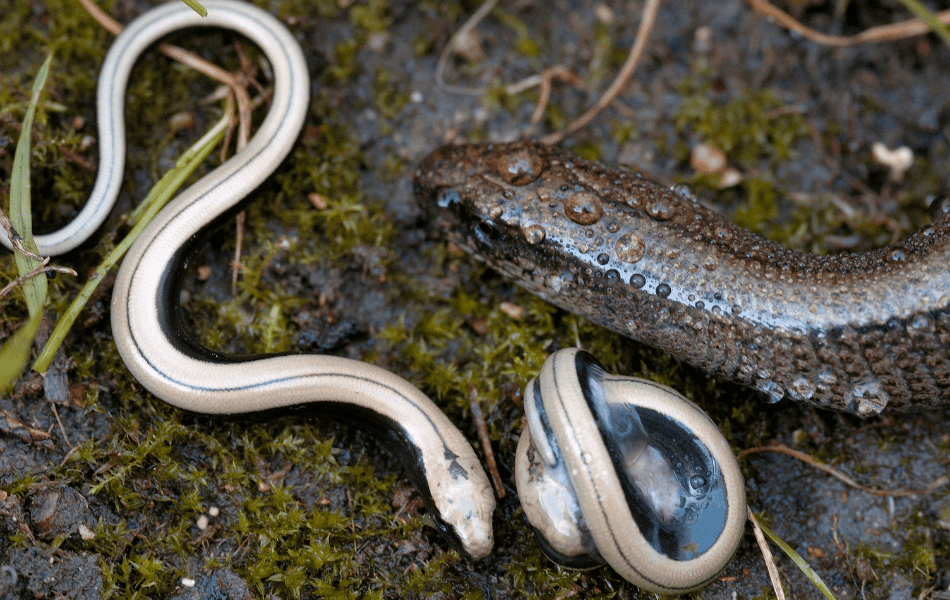
Once you see one of these for the first time, you think it is a snake, as a matter of fact, it is a legless lizard. Can you believe it! The slow worm is also known as the long-cripple, deaf adder and blindworm. As you can see in the picture, the young have a dark stripe along their spine and to conclude, these reptiles can live up to 30 to 54 years.
- Slow worms have small eyes with eyelids that blink, unlike that of a snake
- Even though they are referred to as a blindworm, they are not blind
- They are harmless lizards that spend most of their time hiding beneath matter and objects
- Unlike snakes, slow worms have visible ears
- Snakes shed their skin whole, whereas a slow worm sheds its skin in patches
- As a defence mechanism, slow worms can shed their tails
2. Marbled Polecat
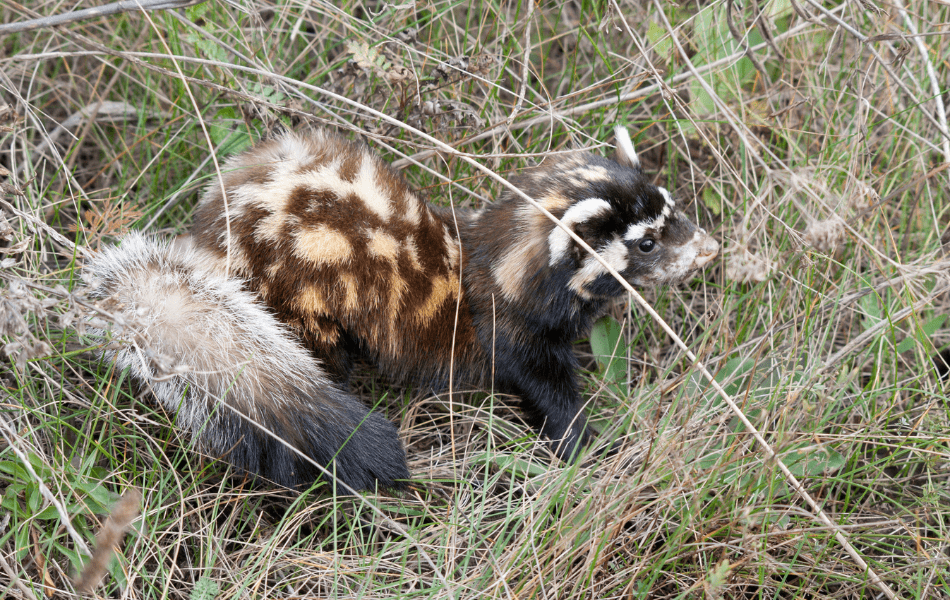
In Montenegro, you will find both the European Polecat and the Marbled Polecat. When God decided on the colouring of the marbled polecat coat, I do not think he could quite decide what colour the pelage should be. The tail is brown, with the tip being darker with normally a yellow band going down the centre. Abaxially you see the marbled effect with the coat being yellow with brown and reddish spots, with a head that looks so different to the rest of the body, with a black stripe across the eyes and white markings around the mouth.
- A shelter is only occupied once, living in underground irrigation tunnels or digging their own dens. In winter they will line their dens with grass
- These 35 cm creatures are private and unsocial, preferring to be by themselves
- If distressed they stand on their back legs, arch their backs backwards and curl their tails over their backs. If very frightened they give short hisses and give out a shrill, while also bearing their teeth
- Activity occurs in the early morning and evening
- The young are altricial and these creatures are carnivorous, eating birds, squirrels, fish, insects and domestic poultry. They will not think twice about stealing your cheese and smoked meat
3. Black Squirrel
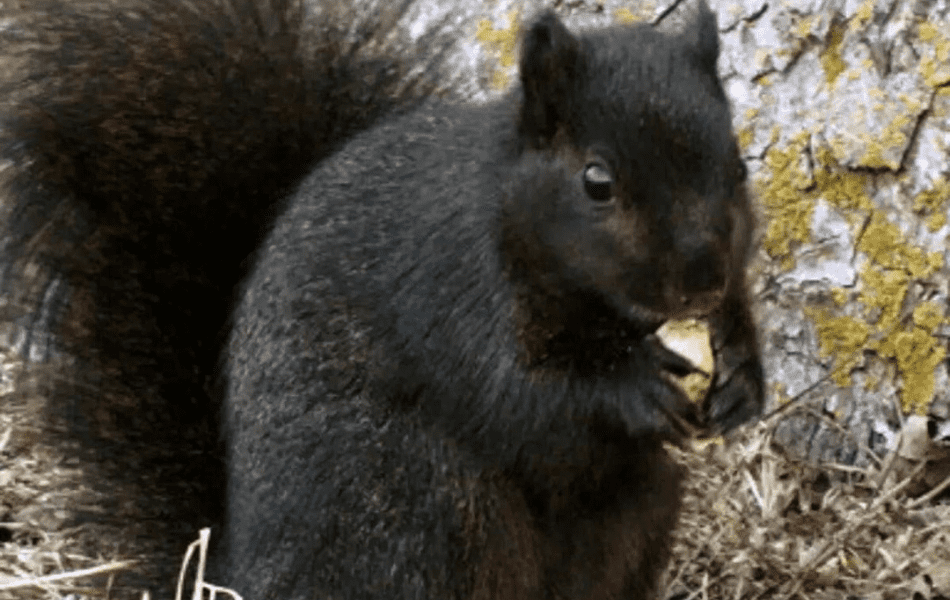
On arrival at the property we rent out, we were warned about the black squirrels however they are not as complacent as the red squirrel. Of course, they have higher testosterone levels and due to this a greater aggression level than the other breeds of squirrels. This is a benefit for them because they need to survive in the wild and be aware of predators.
- Their black coats act as camouflage amongst the shadows of the trees in the forests
- Being shy of people like other squirrels seems to have missed their priority list
- They are not rare but uncommon
- Black fur offers a thermal advantage, especially in the very cold winters in Montenegro
- With their long bushy tails, they are able to balance as they scurry up the trees and act as a steering rudder when they jump
4. Balkan Lynx
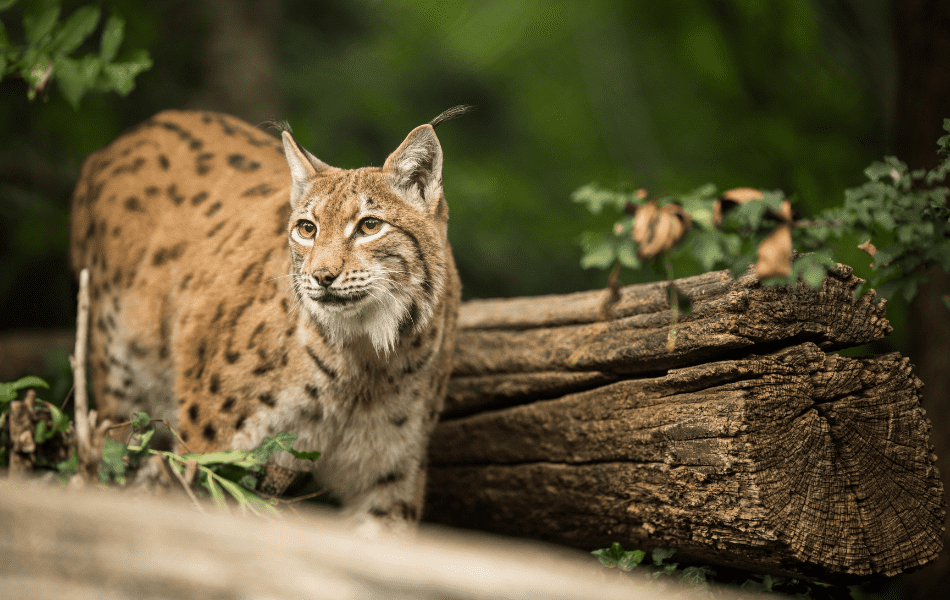
Very few of these lynx exist and are regarded as one of the rarest cats in the wild today, therefore they have been on the edge of extinction for the last 100 years. If you spot one up north, regard yourself as special, they are rarely seen. The greatest threat even today is humans who hunt them for their prized fur. Their ears have tufts and are used to communicate.
- Balkan lynxes are solitary and only get together during mating season. As there are so few of them, this does not always happen
- Photo traps have been put up in the ‘Prokletije’ National Park by the Center for Protection and Research, which is one way to track the Balkan lynx
- At night they can travel up to 45 kilometres
- Both males and females have territories which they have claimed. The females have ones that are smaller than the males
- They generally eat hares and rabbits but are strong enough to take down roe and other deer
5. Roe Deer
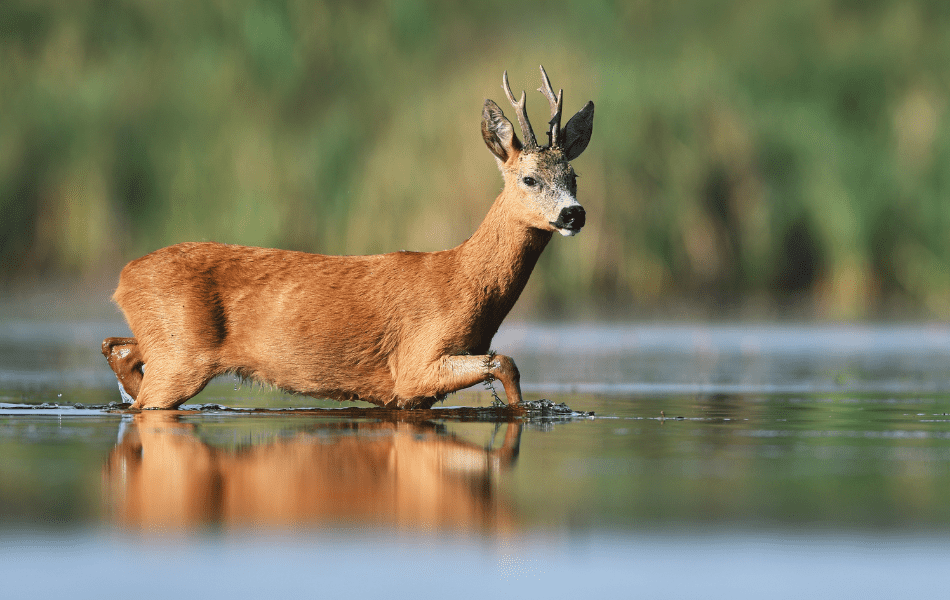
To begin with, they are much smaller than the red deer, they relish grasses, young shoots and berries. For protection from predators during the day, they would rather rest in the dense forests and come out during the nighttime to graze on more open fields. This deer is hunted for food so it is very shy of humans and would rather scatter when humans are picked up on its scent.
- If scared the deer will bark, rather like a dog, then turn and flash its white rump towards whatever alarmed it in the first place
- Rumps on the males (buck) are kidney-shaped and heart-shaped on the females (doe)
- Roe deers shed their antlers during winter when it is no longer mating season. They start regrowth during spring till late summer
- Even though mating occurs during July and August, the doe delays the implantation of the fertilized egg until January. This is one-way nature delays birth during the cold, harsh winter months
- The babies are known as kids or fawns and are born with spotted coats to increase the camouflage in the forests
Montenegro’s Aquatic 5
A new aquarium called the Aquarium Boka, opened in the historical building of marine biology in Kotor in June 2021. Fascinating to go visit and learn about the contrasting and exotic aquatic life in the surrounding waters. Beautiful gardens and souvenir shop.
1. Gurnard – flying fish
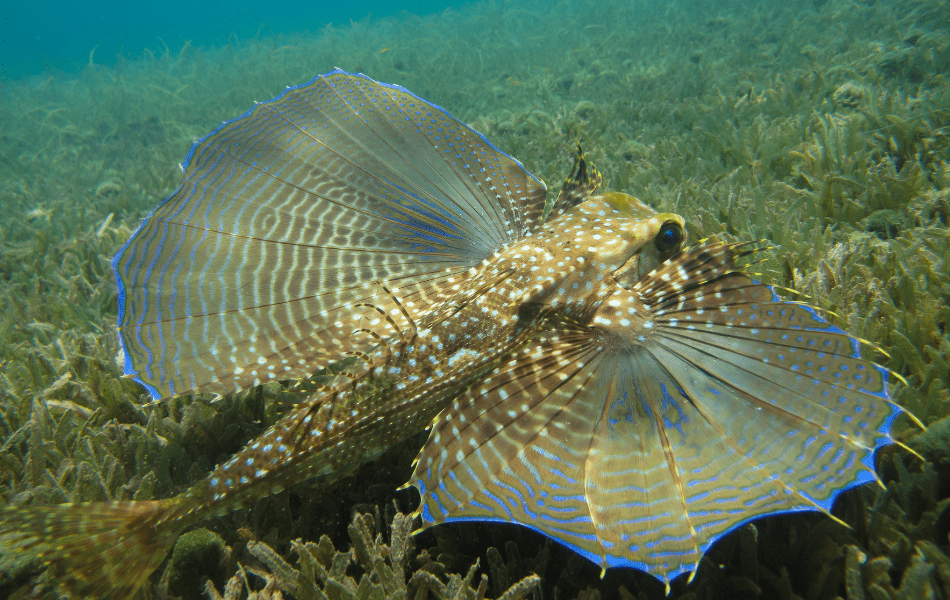
Striking, beautiful fish that prefer the Adriatic warm waters. What makes them distinctive are their fan-like transparent wings with phosphorescent electric blue trimmings.
- Flying gurnards do not actually fly but are known to skim along the surface of the water using their pectoral fins
- Their pelvic fins are used to “walk” on the sandy ocean floor enabling them to spot and disturb their prey
- Gurnard in French means “grunt”. It is believed by some scientists that the grunt, which is a growling sound emitted by their drum muscles and swim bladder, is used to communicate with each other
- When the flying gurnard gets excited or threatened, it spreads its “wings” as a sign to predators to stay away. They give the impression that they are poisonous, as they are a distant cousin of the venomous scorpionfish, but they are not poisonous
- They consume small fish, crustaceans (crabs and shrimps) and bivalves (clams)
2. Striped dolphin
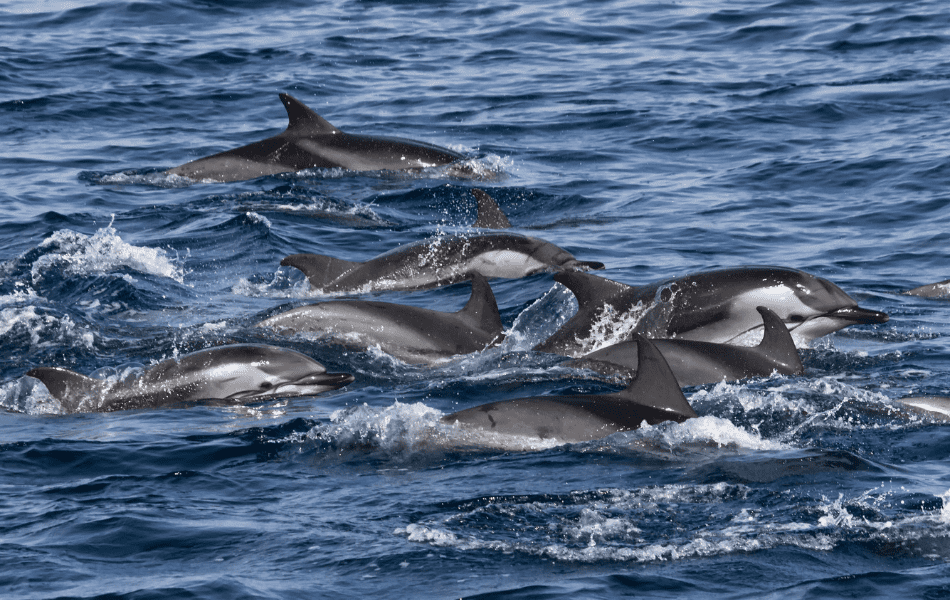
The striped dolphins are exceptionally intelligent, and often regarded as the ocean’s geniuses. These pods (groups) consist of 100 to 1000 and swim closer to the surface, much preferring the temperate and tropical warmer waters. Wonderful vocal utterances and nonverbal gestures as they communicate with each other and their whistles can be heard easily if you are close by.
- They are extremely playful, can jump as high as 6 metres out of the water and love performing numerous acrobatics on the surface of the water
- Often referred to as “streakers” because of their hasty movements while in close proximity to fast-moving boats
- The striped dolphin lives up to 58 years on average if not harmed during its lifetime. The oldest pregnant striped dolphin recorded, was 48.5 years which allows it to have several opportunities to reproduce in its lifetime
- When engaging with these dolphins, keep your distance. They can be dangerous and aggressive. They have been known to brutally butt humans
- Hunting in groups, they use their intelligence to herd the fish, where there is sufficient food for that group
3. Long-snouted Seahorses
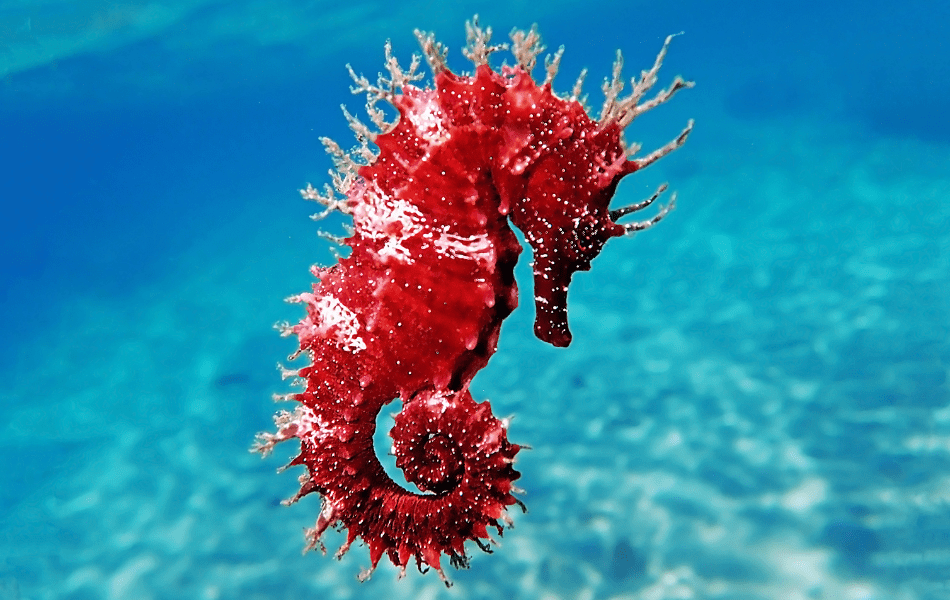
The most common seahorse found in the Mediterranean and along the Montenegro Adriatic coast is the Long-Snouted Seahorse. Around the world, there are nearly 48 different species, adapted to their different aquatic environments. What inimitable aquatic creatures they are, with their horse head, pouches like a kangaroo and tail like a monkey.
- Regarded as the chameleons of the sea, they can adapt their colour to their environment and move each eye independently
- When the sea gets rough, they use their tail to anchor onto some form of vegetation
- Male seahorse start their courtship with a dance, holding tails and changing colours
- Generally, the long-snouted seahorse will grow to 12 cm long, but some have been found to be 21 cm long. That is rather huge
- The long-snouted seahorse is generally rare
4. Katran Shark
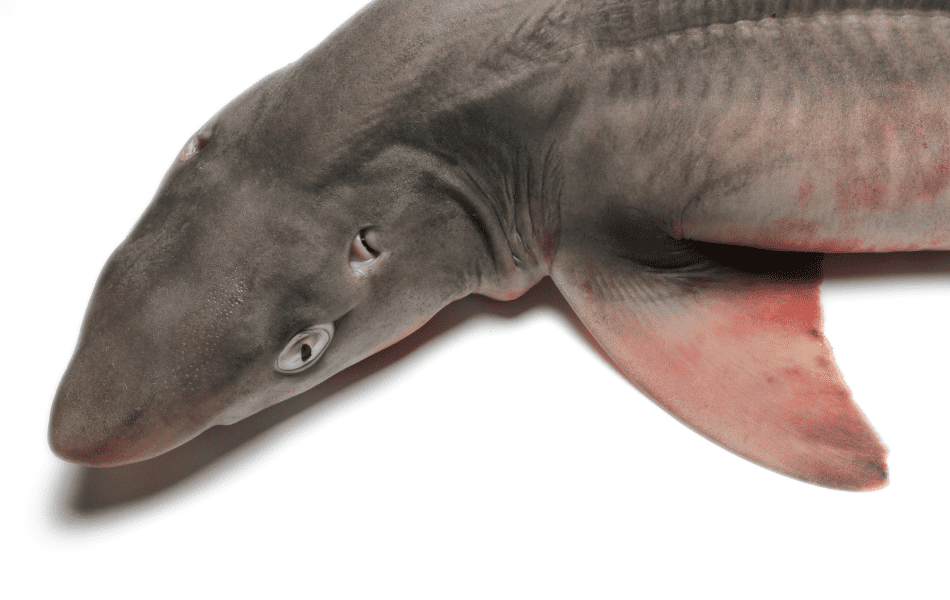
A steel grey shark, with a lighter underside, is not dangerous to humans, with a length of 120 cm long and is only uncomfortable if you happen to stand on the spiny prickles on its back. A mouth that constantly seems to have a smile and stretches into a crescent, and last but not least, eyes that are large and seem to examine you from every angle. Due to their elongated, streamlined body, they can move through the water very quickly.
- Katran sharks do not feel any pain
- They have an extremely well-developed sense of smell
- In comparison to other sharks, the Katran does not have an anal fin
- Katran sharks only come up to the surface at night time, normally living at depths of 15 to 100 metres
- Their teeth are sharp and in multi rows, but do fall out and regrow during their lifetime
5. Bottlenose Dolphin
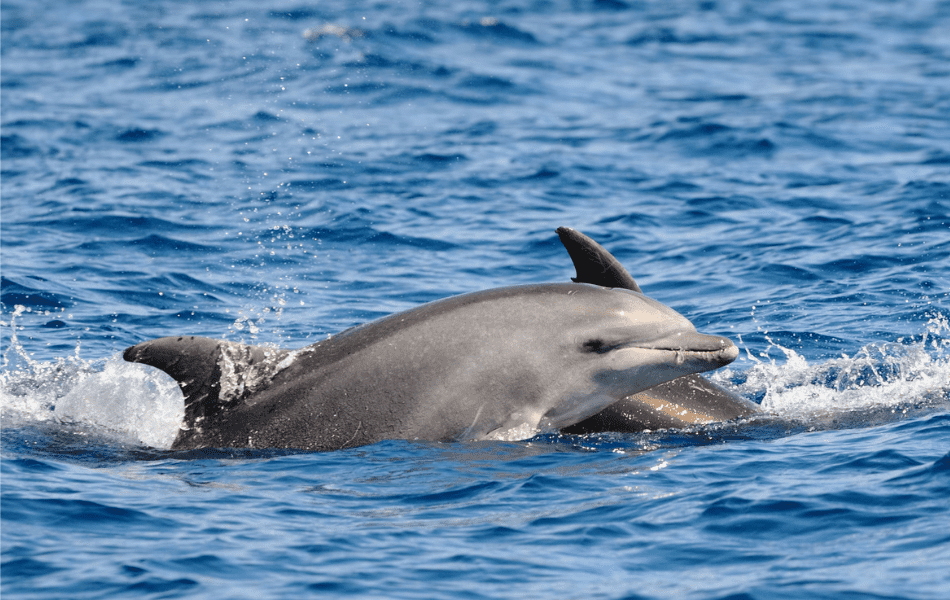
“Key natural habitats for bottlenose dolphins were found all along the Montenegrin coast with notable preferences for Ulcinj, Bar, and the Boka Kotorska Bay.”- 2021 International Workshop on Metrology for the Sea. There is a worrying decline of bottlenose dolphins along the Montenegro coastline, as this could be occurring due to the increase in tourism, and ship and boat traffic. There was a huge knowledge gap in the country, but in 2016 the MDR (Montenegro Dolphin Research) was established.
- Dolphin echolocation allows the dolphin to detect surgically implanted metal in swimming humans. “Echolocation is an acoustical process which is used to locate and identify a target by sending sound pulses and receiving the echoes reflected back from the target.”
- Scientists consider intelligence to be a combination of perception, communication, and problem-solving and dolphins are regarded as the world’s most intelligent animals and very chatty creatures
- Dolphins only sleep with half their brain
- To determine the age of the dolphin, a vet counts the rings inside each tooth. Each ring represents a year. Bottlenose dolphins can live up to 20 to 50 years
- Their skin is smooth and soft. The softness is because every two hours they regenerate the cells on their skin
Montenegro Birds – Medley of 5
Millions of birds migrate from Africa to Europe and vice versa along the migration corridors and Montenegro is the most important corridor. 353 bird species have been spotted in this incredibly diverse country and because of its wildness, many more are expected to be spotted. If you are a birder, Montenegro is your bird paradise!
1. Lesser Spotted Eagle
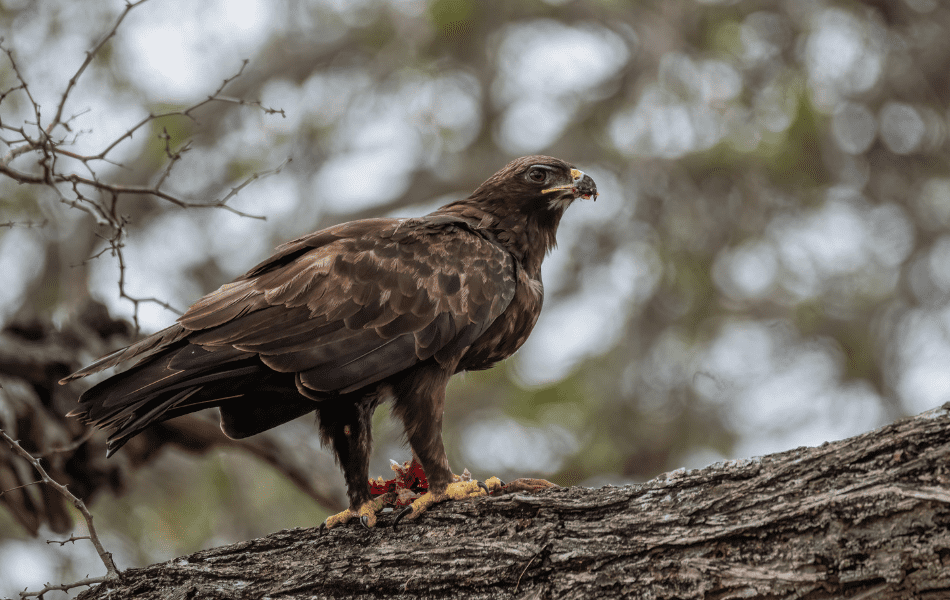
One of the most territorial eagles in Montenegro and the Lesser Spotted Eagle is always up for a fight if any other bird approaches its territory. An average size eagle of around 60 cm high and has a wingspan of about 150 cm, however, they sleep at night and hunt during the day, therefore are diurnal.
- When they hunt for food, they seldomly do so while in flight, but rather prefer to forage for food on the forest floor
- The females are very neighbourly and will often visit other females in their nests and stay for short periods of time even if they are not family
- Females mate for life after initiating courtship when they are 4 or 5 years old
- A convocation or aerie is a group of eagles
- They often hunt with other Lesser Spotted Eagles
2. Dalmatian Pelican
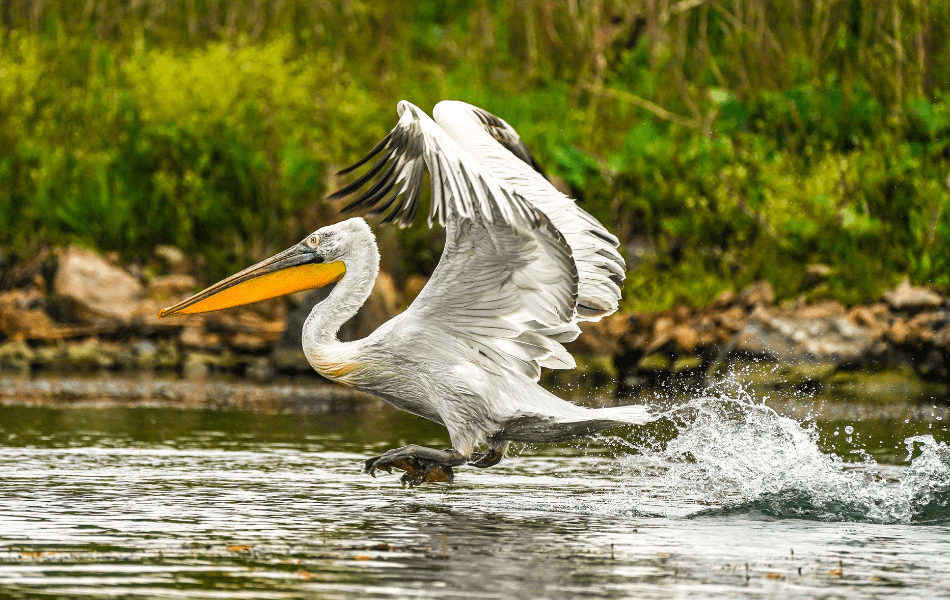
When you go to Skadar Lake you will find the breeding ground of the Dalmatian Pelican, yet they are a species at risk, but numbers are increasing annually. In the wild, they live up to 25 years. There are numerous collective nouns for the Dalmatian Pelican, such as pod, a scoop of pelicans, pouch or squadron.
- The male will provide twigs, grass and algae for the female to make her nest and carry these materials in his pouch. He can make up to 40 trips a day and this will carry on for 4 to 5 days
- Biggest pelican species and one of the largest freshwater flying birds
- Because of their large size, they are inclined to be awkward on land but are fabulous swimmers because of their webbed feet and magnificent elegant flyers, flying in flocks of graceful synchrony
- They will feed in groups veering the fish together, then dunking their head underwater, scooping the prey in their beaks, rather like a fishing net and allowing the water to spill out of their pouch. Sometimes they do not eat all the fish at once, but rather store the food for later in their pouch
- Their wingspan can reach 3.5 metres and they can weigh as much as 14 kilograms
3. Grey-headed Woodpecker and White-backed Woodpecker
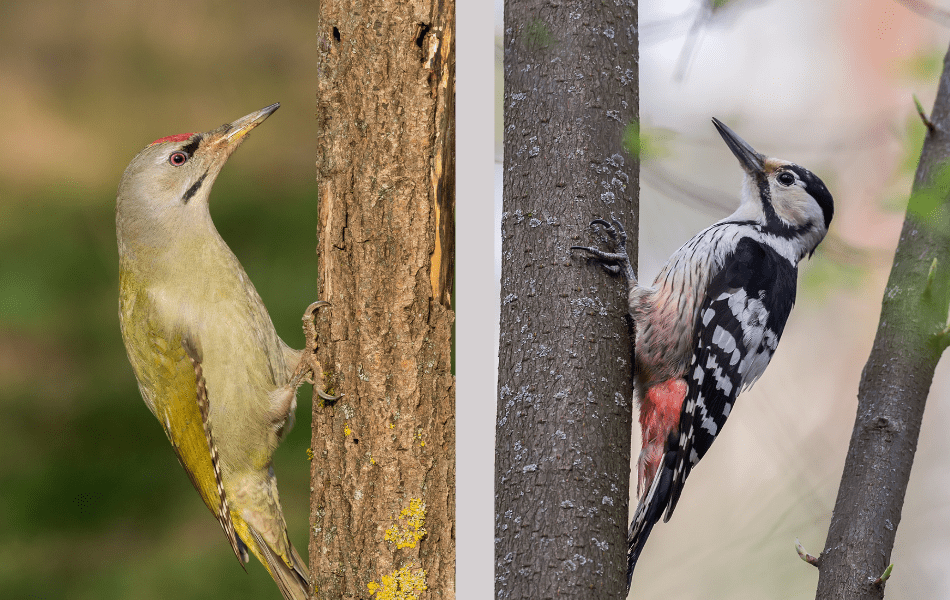
Both these woodpeckers can be found east of Durmitor National Park, in an area called Biogradska gora National Park. This national park is one of the first protected areas in Europe, encompassing deep river valleys and mountains over 2000 m high, 7 mountain lakes and patches of virgin forest.
- The grey-headed woodpecker is also known as the grey-faced woodpecker
- Largest of the woodpecker family, the white-backed woodpecker males have a red crown and the females have a black crown. (the picture above on the right is a female)
- Fussy habitat residents, the grey-headed woodpecker prefers deciduous forests where there are a number of dead trees
- In the breeding season, the white-backed woodpecker pecks out a 30 cm deep hole, about 7 cm wide and will lay 3 to 5 white eggs, which will incubate for 11 days
- Grey-headed woodpeckers are quite the “drummers”. They can drum for 40 beats or 2 seconds. Drumming occurs to attract a mate or when they want to defend a territory
4. Collared Pratincole
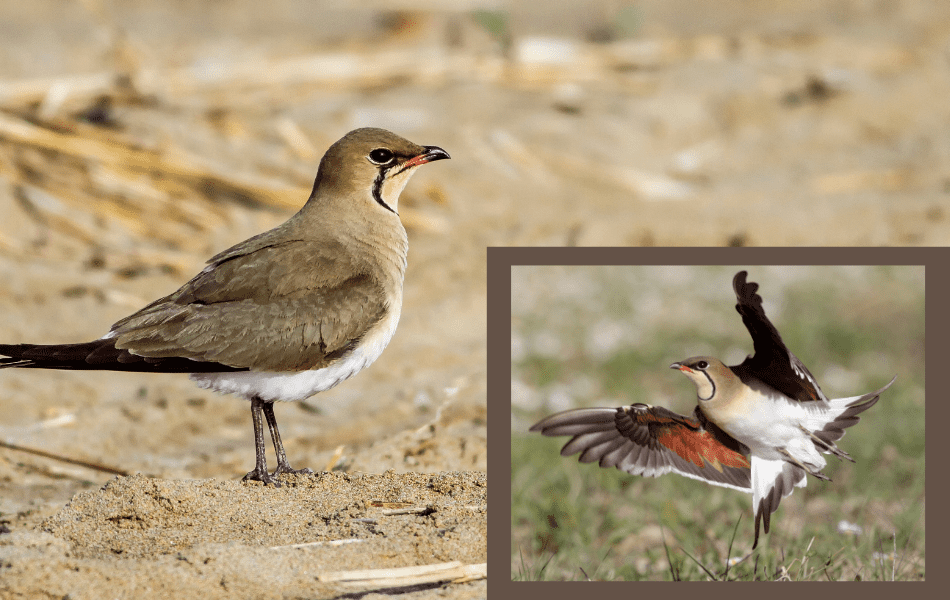
One of my favourites as when the collared pratincole opens its wings you receive a gift of magnificence! Found predominantly in the Ulcinj saltpans and the Bojana Delta.
- Often seen near water in the evenings
- Regarded as waders but they do hunt their insect prey on the wing like swallows and also on the ground
- They have a 60–70 cm wingspan
- Their back and head are brown, but underneath they are white, brown, burnt umber, with the tips of the tail, brown and running from their eyes down a white oval with an outline of black
- It is migratory, wintering in tropical Africa
5. Eastern Imperial Eagle
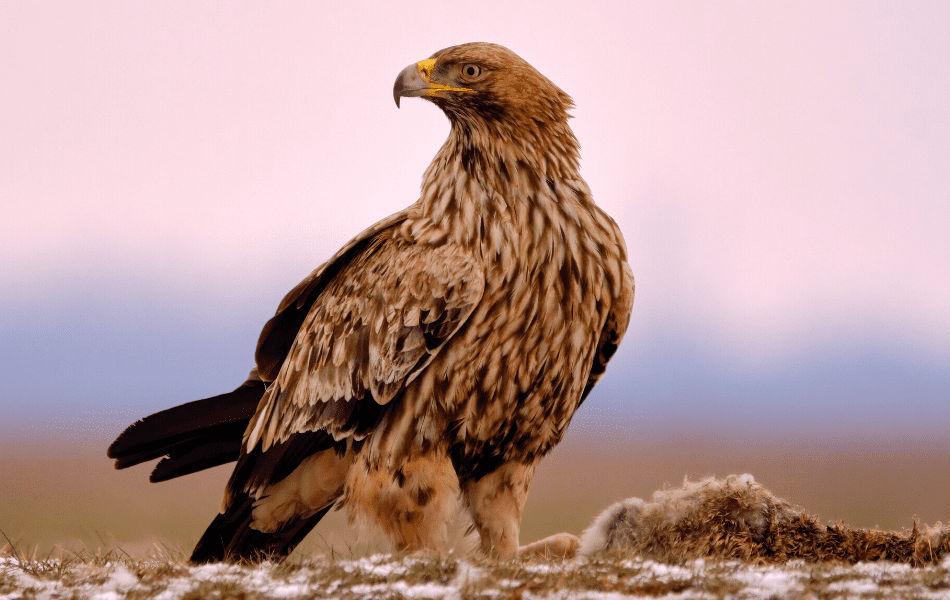
“A strong woman is like an eagle, against the strong winds she soars.” – Gift Gugu Mona
Humans have always related to the symbolism of eagles as strength, willpower, focus and ferocity, however, they also represent truth, duty, honesty, integrity and justice. When we spot an eagle, we feel we have achieved a great victory! These large birds of prey are migratory in the winter.
- Eastern imperial eagles are monogamous birds of prey and they will choose their mates when they are around 4 years old
- A deep “kraw-kraw” is repeated 8 – 10 times while it is on its breeding ground, but otherwise, it generally remains silent
- Compared to other eagles, the eastern imperial has a rather long neck
- It has varied hunting techniques but mostly takes its prey of small animals, reptiles and carrion on the ground
- Their population has declined over the years due to unlawful poisoning, habitat damage, and electrocution
A well-worth birdwatching vacation is with Montenegro Pulse. You will be shown the most spectacular birding areas, at stay in comfort at the same time with your hosts Ben and Emma. Andrej Vizi. Andrej is one of Montenegro’s leading ornithologists and is the curator of the National History Museum of Montenegro, he will be your expert guide.
Montenegro Reptiles Worth a Mention
Nose-horned Viper
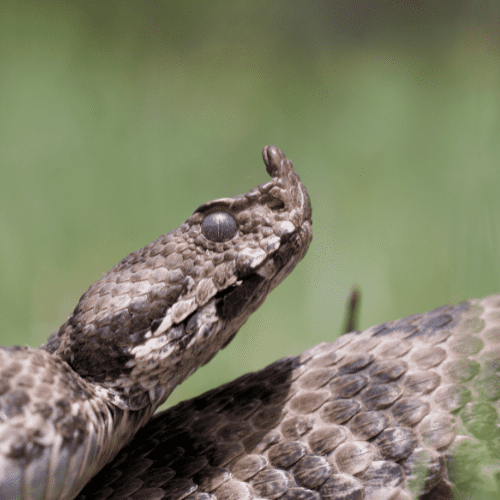
- Also known as the sand viper
- One of the few venomous species of snakes in Montenegro
- Their fangs can be as long as 1.27 cm
Northern crested newt
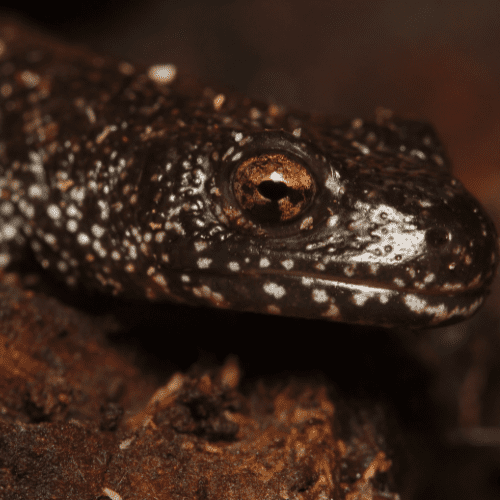
- These newts can be 18 cm long
- Also known as the great crested newt or warty newt
- These newts are not venomous
Logger-head Turtle
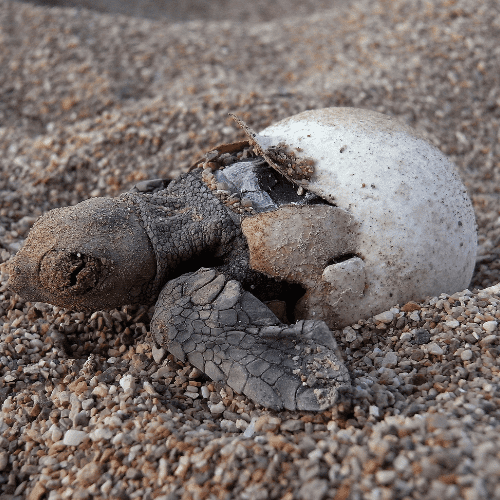
- Named for its broad head and large body
- Have 3 to 5 nests two weeks apart and lay 100 eggs in total
- When mating the male will “hang on” for up to 24 hours to prevent other males from mating with her
Have you spotted any unique creatures in Montenegro? If you have, please share it with us in the comments section below.
Recent Posts
Discover insider tips to find cheap flights from the UK, save on easyJet, Ryanair & BA, and score the best weekend and last-minute deals. Why You’re Paying Too Much for Flights Most UK...
Discover the sounds of travel, from laughing kookaburras to market chatter, church bells to ocean waves - a journey heard as much as seen. It always starts with a sound. The other day, walking...

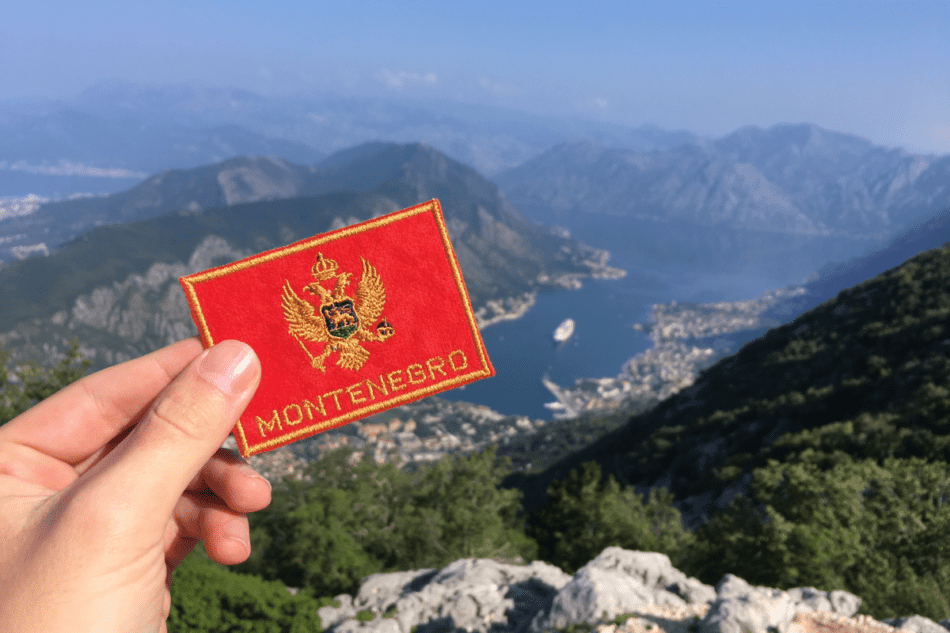
One thought on “Wildlife of Montenegro: who would guess”
Comments are closed.